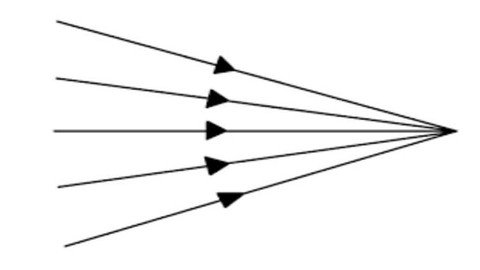Geometrical Optics – Download Free
- 16.03.2023
- 0

Free Download Geometrical Optics
Published 3/2023
MP4 | Video: h264, 1280x720 | Audio: AAC, 44.1 KHz
Language: English | Size: 303.81 MB | Duration: 0h 47m
Ray Optics :Types and behaviour
Free Download What you'll learn
What is Ray Optics?
What is Reflection?
What is Refraction?
Images formed in mirrors and lenses
Requirements
Basic Optics knowledge
Description
Geometrical optics, or ray optics, describes the propagation of light in terms of "rays" which travel in straight lines, and whose paths are governed by the laws of reflection and refraction at interfaces between different media. These laws can be summarized as follows: when a ray of light hits the boundary between two transparent materials, it is divided into a reflected and a refracted ray. It deals with the formation of images by using optical devices such as mirrors, lenses and prisms.* A ray of light is an extremely narrow beam of light.* All visible objects emit or reflect light rays in all directions.* Our eyes detect light rays.* We think we see objects. We really see images.* When light rays go straight into our eyes, we see an image in the same spot as the object. object & imageHow do we see images in mirrors?object image Light from the object reflects off the mirror and converges to form an image.SIGHT LINES object image We perceive all light rays as if they come straight from an object. The imaginary light rays that we think we see are called sight lines.IMAGE TYPES object image Real images are formed by light rays. Virtual images are formed by sight lines. mirror object & image window\SPHERICAL SURFACES (CONCAVE & CONVEX)CONCAVE & CONVEX (JUST A PART OF A SPHERE) C: the center point of the sphere r: radius of curvature (just the radius of the sphere) F: the focal point of the mirror or lens (halfway between C and the sphere) f: the focal distance, f = r/2 r f • C • F TERMINOLOGIES The Center Of Curvature, C, is the center of the sphere, of which the mirror is a section. The Principal Axis is the line that passes through the center of curvature and the center of the mirror. The principal axis is perpendicular to the surface of the mirror at A. CA is the Radius Of The Sphere, or the radius of curvature of the mirror, R . The point at which the rays converge is called the focal point. Halfway between C and A is the Focal Point of the mirror, F. This is the point where rays parallel to the principal axis will converge when reflected off the mirror. The length of FA is the Focal Length, f. The focal length is half of the radius of the sphereREAL VS. VIRTUAL IMAGES Real images • When light rays actually converge and pass through the mirror. • Located in front of the mirror forming them. • Can be projected onto a piece of paper or a screen. Virtual images • Occur where light rays only appear to have originated. • Rays appear to be coming from a point behind the mirror. • Can't be projected on paper, screens, or film since the light rays do not really converge there.MIRRORS A smooth and well polished srfacethat reflect regularly most of light falling on it. Types: 1. Plane Mirror: • Plane sheet of glass • one surface is silvered other surface is polished. 2. Spherical Mirror: • Part of a hollow sphere • one surface is silvered other surface is polished.CONCAVE AND CONVEX MIRRORS light rays light rays Concave mirrors reflect light from their inner surface Convex mirrors reflect light from their outer surface LENSES Lenses are made of transparent materials, like glass or plastic Refract the incident light Have an index of refraction greater than that of air. Each of a lens has two faces either part of a sphere or cylinder and can be convex or concave (or one face may be flat).CONCAVE AND CONVEX LENSES light rays light rays Concave Lenses refract light from their inner surface Convex Lenses refract light from their outer surface
Overview
Section 1: Introduction
Lecture 1 Introduction
Lecture 2 Reflection
Lecture 3 Images formed in Curved mirrors
Lecture 4 Refraction
Lecture 5 Images formed in Lenses
Beginners
Homepage
https://www.udemy.com/course/geometrical-optics/Download
Links are Interchangeable - Single Extraction